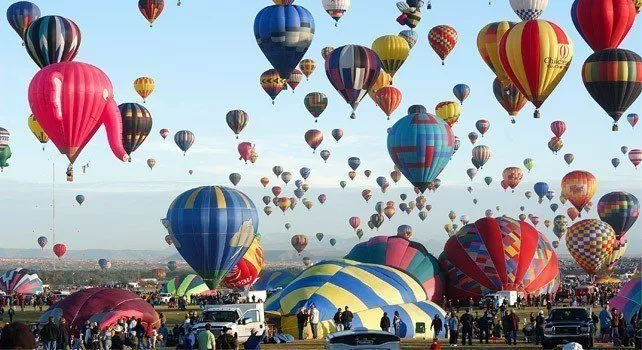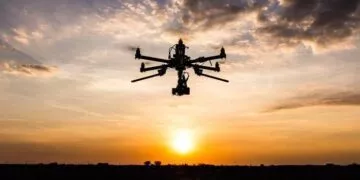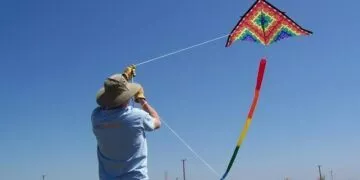Hot air balloons were first discovered in France when Joseph Michel Montgolfier and his brother Jacques Montgolfier realized that a fabric bag filled with hot air would rise.
In 1782 Joseph filled a silk bag with hot air which lifted the bag to the ceiling of his house.
Farm animals heading on high.
On April 25, 1783, Joseph and his brother built a larger, spherical bag, filled it with hot air from a fire, and sent several farm animals aloft in a basket hung underneath it, animals such as ducks, roosters, and even sheep!
This was a great success, so from there they created an even bigger one.
Two brave men take to the skies of Paris.
On November 21, 1783, in Paris, the brothers launched a 70-foot (21 meters) high balloon carrying two brave men.
It traveled over Paris for five and a half miles. It managed to stay up in the air for roughly 24 minutes!
This was the first attempt made by man to fly, and it worked as well as they expected, which is why they are still used to this day.
The complicated truth about hot air balloons.
Hot Air Balloons are more complicated than they look these days though, here are a few facts you didn’t know about Hot Air Balloons:
There are “flying wires” to attach the basket to the balloon. The part that helps direct the hot air into the balloon is called the skirt.
A Parachute is always right at the top of each Hot Air Balloon – just in case!
Each long section of the Hot Air Balloon is called the gore. Smaller pieces of the gore are called panels.
Professionals need a commercial pilot’s license!
Balloon pilots need a commercial pilot’s license (fixed-wing). They must have at least 35 hours of flight instruction, attend ground school for basic aviation training, pass a written test for hot-air balloons, and have a flight check from a Federal Aviation Administration official.
According to the FAA, balloons must meet air-traffic control requirements if they are in a controlled airspace, and pilots must have radio contact with controllers.
Accidents are rare, especially in the Northwest. The only serious injuries for the area – found in a check of National Transportation Safety Board balloon accident reports back to 1984 – were a broken leg and a broken ankle, both from rough landings.
Hot air balloons do not fly when it is raining, mainly due to the fact that the heat of the balloon can cause the rainwater to boil on the balloon, and boiling water destroys the fabric and would cause problems.
Finally, children under the age of five aren’t usually allowed on them for safety reasons.

















